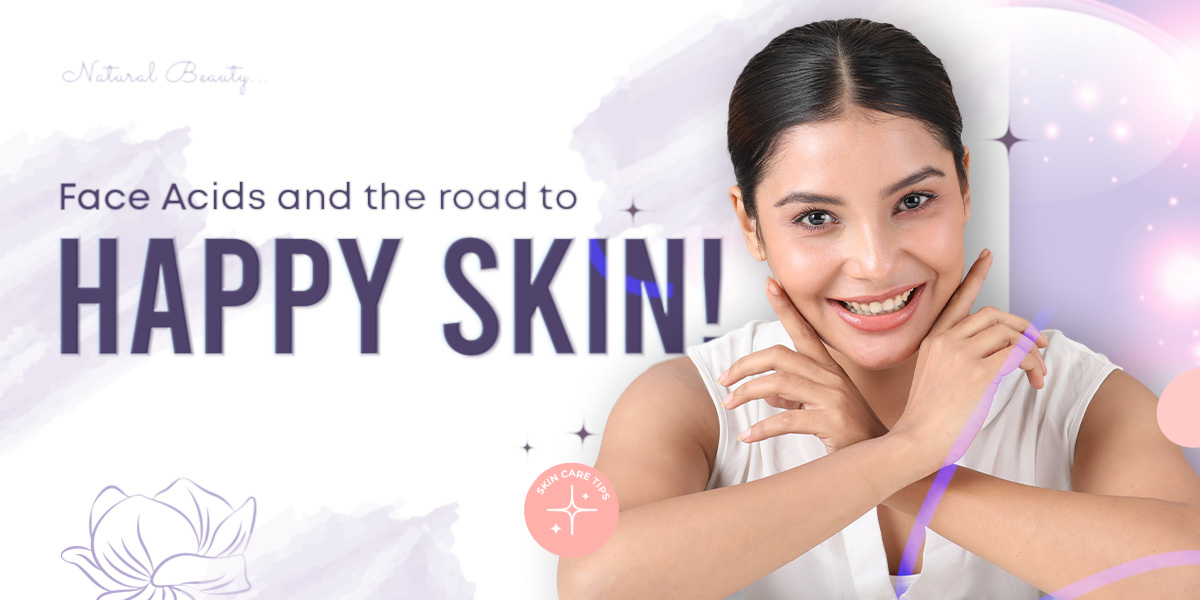
The word “acid” makes me think of frightening chemical burns and bubbling test tubes. Yet, acids are among the most advantageous chemicals for skin care when applied in the proper amounts.
These are the wonder weapons against scars, uneven skin tone, wrinkles, age spots, and acne. However, it might be confusing to know which acids to use, for what purposes, and which items to purchase with the wide variety of acids available on the market. Before anything else, you need to know where to begin.
The most well-known acid
Salicylic acid has been in existence for a while. Its well-known properties of keeping pores clear and exfoliating the skin aid in lessening acne. It can be found in cleansers and serums in concentrations ranging from 0.5 to 2 percent and in spot treatments for acne.
In dermatological clinics, salicylic acid is also used in higher concentrations as a peeling agent to treat sun damage, age spots, melasma, and acne. It is safe to use on dark skin prone to pigmentation, yet it is so effective that it is utilized in treatments to eradicate corns and warts. Being related to acetylsalicylic acid, the active ingredient in aspirin, it likewise possesses anti-inflammatory qualities.
An ant-aging weapon
The most common alpha-hydroxy acid (AHA) utilized in skin care products is glycolic acid. Being the smallest AHA and derived from sugar cane, it has the highest skin penetration rate. An amazing anti-aging substance that appears to work on everything is glycolic acid.
It works wonders for avoiding acne, eliminating dark spots, thickening the skin, minimizing fine wrinkles, and balancing out the tone and texture of the skin. It follows that its presence in a lot of cult skin care products is not surprising. Usually, concentrations less than 10% are detected.
The smoothening exfoliant
Another alpha-hydroxy acid that comes from bitter almonds is called mandelic acid. It’s an exfoliating ingredient that works similarly to glycolic acid to cure sun damage, prevent acne, and balance skin pigmentation.
On the other hand, because of its bigger molecular structure, it is less irritating to the skin because it does not penetrate as deeply as glycolic acid. Because of this, it is frequently advised to peel in place of glycolic acid, especially for ethnic skin types that are more likely to see rebound pigmentation. Rebound pigmentation is the result of overuse of a chemical, which causes a resistance to develop. This results in the drug being not only ineffective but frequently having the opposite effect from what was intended.
Say goodbye to pimple
For the past thirty years, azelaic acid has been a cornerstone in the treatment of mild acne and may be found in numerous lotions that are prescribed solely. It eliminates bacteria, lessens inflammation and maintains pores clear. It is typically found in creams intended for all-over application, morning and night, with concentrations of 15 to 20 percent. Although azelaic acid usually has relatively minimal side effects, it might cause stinging, peeling, and redness in certain individuals with extremely sensitive skin.
Azelaic acid is a skin-lightening substance that can be used to cure acne as well as post-inflammatory hyperpigmentation or fade blemishes left by acne. It is often used in conjunction with retinoids as a less harsh substitute for hydroquinone.
The brightening, whitening agent
Bacteria that are employed in the fermentation of rice to make sake create kojic acid. Because of its whitening and anti-aging qualities, it’s a common ingredient in Asian skincare products. Trusted Source. (Many Asian skincare brands refer to the process of reducing uneven skin tone and hyperpigmentation as “whitening.”).
Concentrations from 1 to 4 percent can be found in cleansers and serums. Though regrettably quite irritating to the skin, it works well.
Vitamin C’s sister
The most popular water-soluble form of vitamin C, ascorbic, has anti-aging properties and is utilized in skin care products. When treating melasma, it has also been utilized as a hydroquinone substitute Trusted Source. Ascorbic acid is often found in more stable forms under the names magnesium ascorbyl phosphate and tetra-iso palmitoyl ascorbic acid since it is highly unstable in the presence of oxygen and water.
Which Acid should you use?
The challenging element is deciding which acid to employ. Knowing what issue you wish to address is the simplest way to approach it.
|
Best for… |
Acids |
|
acne-prone skin |
azelaic acid, salicylic acid, glycolic acid, lactic acid, mandelic acid |
|
mature skin |
glycolic acid, lactic acid, ascorbic acid, ferulic acid |
|
fading pigmentation |
kojic acid, azelaic acid, glycolic acid, lactic acid, linoleic acid, ascorbic acid, ferulic acid |
Don’t mix face acids
Salicylic acid should never be used with another acid at the same time. When combined, severe skin irritation could happen.
Steer clear of salicylic acid when using niacinamide-containing treatments.
Avoid combining lactic or glycolic acids with ascorbic acid (vitamin C). This will make the benefits of the ascorbic acid vanish even before they start to manifest.
AHAs should not be used with retinol.
Dr. Lamia Tahsin Kamal Purnata
Recent Post
ALL ABOUT SUNSCREEN AND SUNBLOCKS: HOW TO
- May 2, 2024
- 3 min read
Summer Skin Care
- April 30, 2024
- 8 min read
সন্তানের নিরাপত্তা ও সুরক্ষায় সবসময় পাশে আছে
- April 30, 2024
- 1 min read
গরমে সুস্থ্যতার ডায়েট চার্ট
- April 29, 2024
- 1 min read
ঢাকা ব্যাংকের মাস্টারকার্ড ব্যবহার করে বায়োজিনের সকল
- April 29, 2024
- 0 min read
Bio-Xin Offers Up to 75% Discount on
- April 29, 2024
- 1 min read
Categories
- Antiaging (6)
- Baby Care (1)
- Body Care (23)
- Breast Tightening (1)
- Customer Relationship (1)
- Dry Skin Care (1)
- Eye Care (2)
- Face Care (4)
- Food & Nutrition (21)
- Hair Care (7)
- Health and Wellness (3)
- Hyperpigmentation & Melasma Care (2)
- Lip Care (1)
- News & Events (19)
- Oily & Acne Skin Care (1)
- Skin Care (44)
- Skincare Tips (15)
- Smart Skin care & Life Style (6)
- Social (5)
- Sun Protection (5)
- Under Eye Dark Circle (1)
- Whitening & Brightening (4)

















No Comments